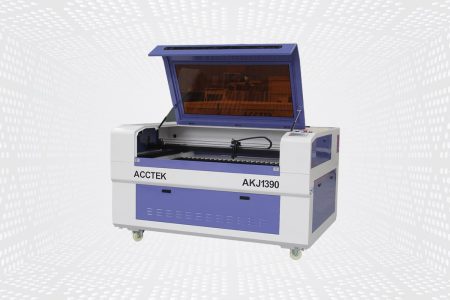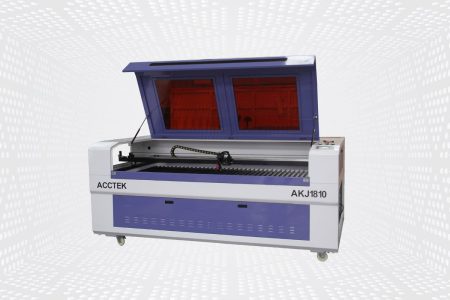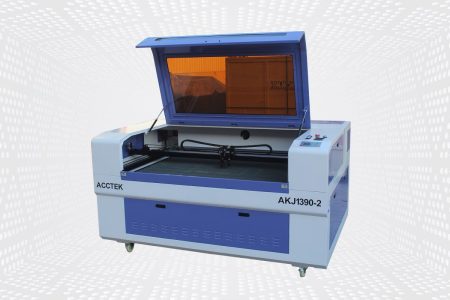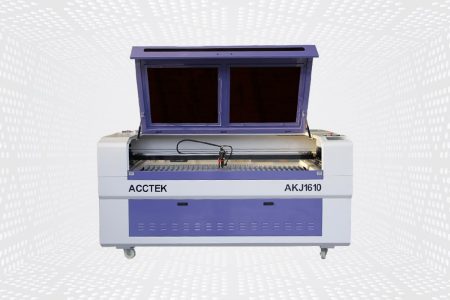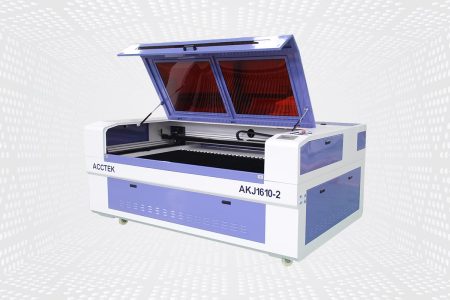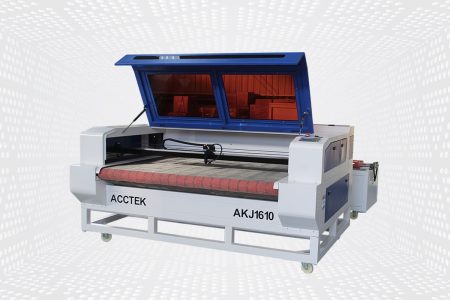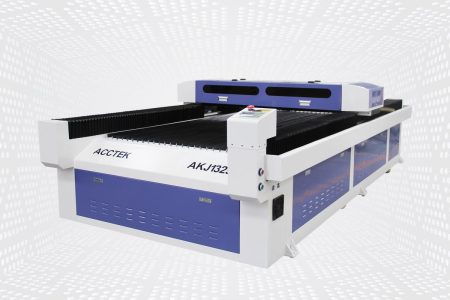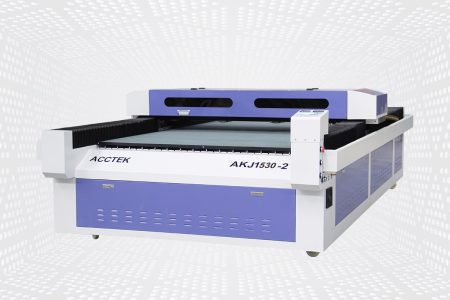PET Laser Cutting Machine
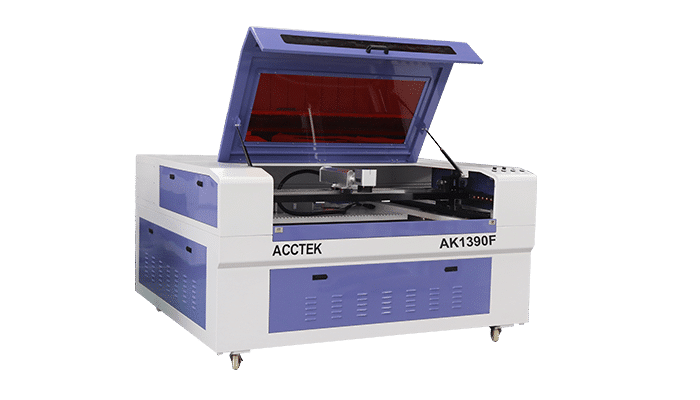

Photoelectric Technology
AccTek Laser focus on designing and manufacturing photoelectric-related system. We provide accurate and exquisite processing quality with leading R&D capability.

Integration Ability & Experienced
With an experienced, completed, and elite R&D team, customized such as automated, integrated with the robot, system integration, etc. are all available.

Professional Service
AccTek Laser's laser cutting machine is a professional laser cutting machine designed and manufactured in China. Our elite engineering team provides related service support.
Equipment Features
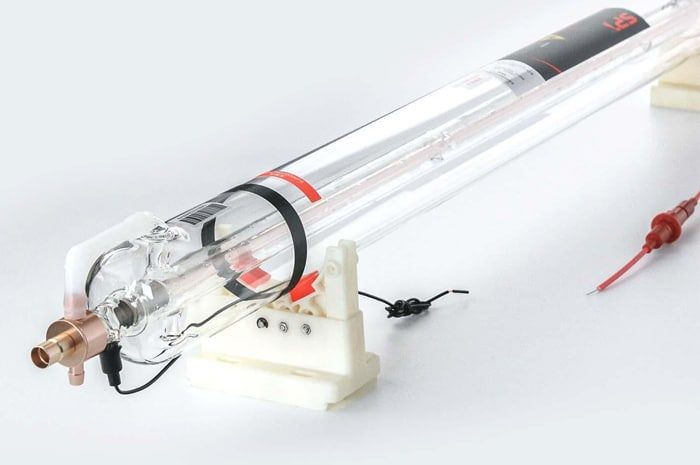
High Power CO2 Laser Tube
The machine is equipped with a powerful CO2 laser tube, which can provide precise and efficient cutting and engraving performance on various materials, including acrylic, wood, leather, fabric, glass, and so on. A high-powered laser tube ensures clean, precise cuts and smooth edges, while also enabling detailed engraving, making it suitable for intricate designs and industrial applications.
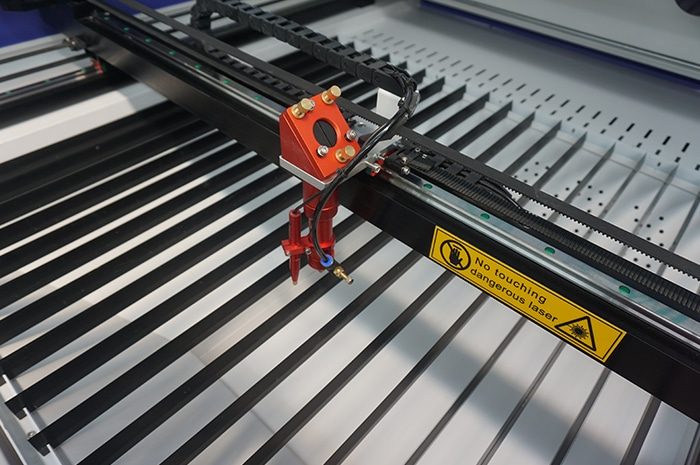
Advanced Motion System
The machine is equipped with an advanced motion system to ensure smooth and accurate movement of the laser head during cutting and engraving. This precise motion control enables clean, sharp cuts while also enabling detailed and intricate engraving on a variety of materials.
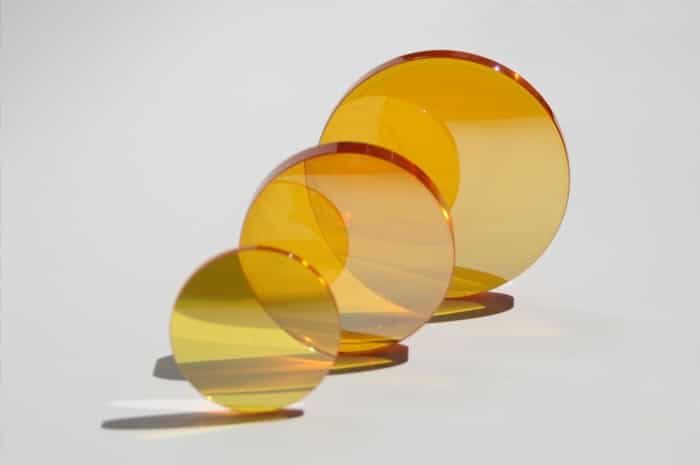
High-Quality Optics
The machine is equipped with high-quality optics capable of producing a narrower, more stable laser beam, ensuring precise cutting paths and cleaner edges even on complex designs and delicate materials. In addition, high-quality optics help reduce beam divergence and losses, thereby improving energy efficiency.
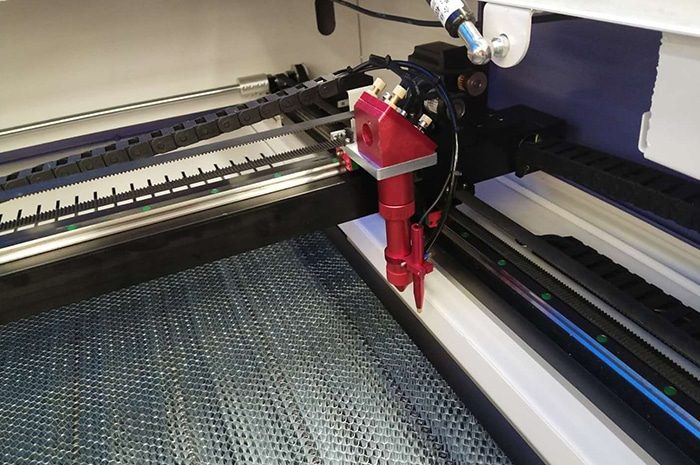
High-Precision CO2 Laser Head
The high-precision CO2 laser head is selected, and it has a red dot positioning function to ensure that the laser beam is precisely aligned with the focusing optics and the nozzle. An accurate laser beam contributes to consistent and uniform cutting results. Additionally, the CO2 laser head is equipped with height control, which ensures consistent focus and compensates for any variations in material thickness or uneven surfaces.
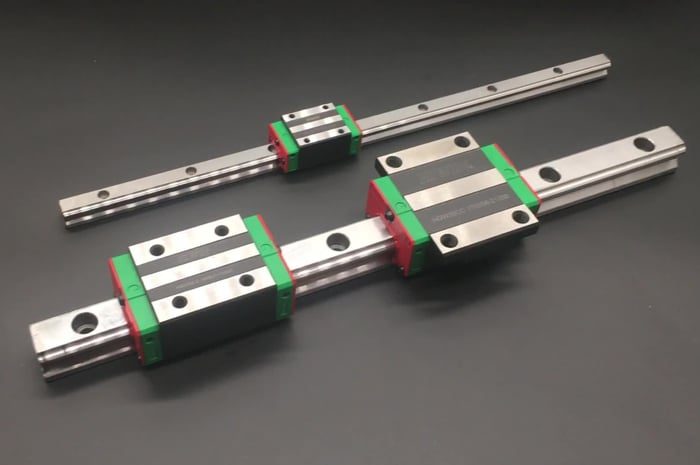
High-Precision HIWIN Rail
The machine is equipped with a Taiwan HIWIN guide rail with excellent precision. HIWIN is manufactured to tight tolerances, ensuring smooth and stable linear motion. This level of precision contributes to accurate and consistent laser cutting, especially when working with intricate designs and fine details. In addition, HIWIN rails are designed to minimize friction, resulting in smooth and quiet movement.
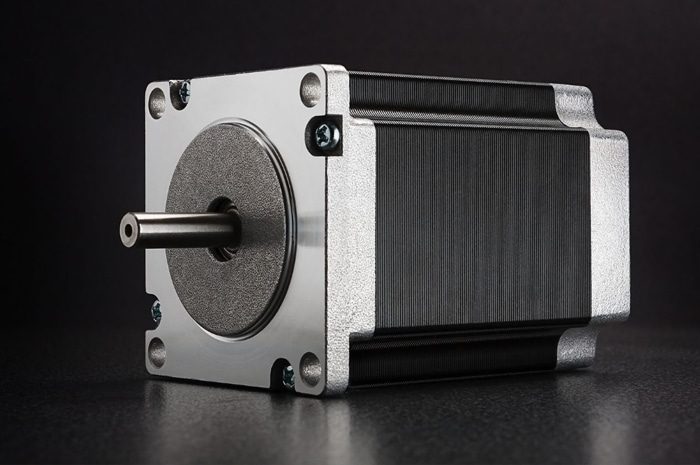
Reliable Stepper Motor
The machine adopts a stepper motor with strong power and reliable performance to ensure the normal operation of the machine. Not only are stepper motors cost-effective, but they also provide precise control of moving parts, ensuring high-quality laser cutting and stable positioning of optical components for reliable, efficient operation.
Technical Specifications
| Model | AKJ-6040 | AKJ-6090 | AKJ-1390 | AKJ-1610 | AKJ-1810 | AKJ-1325 | AKJ-1530 |
|---|---|---|---|---|---|---|---|
| Working Area | 600*400mm | 600*900mm | 1300*900mm | 1600*1000mm | 1800*1000mm | 1300*2500mm | 1500*3000mm |
| Laser Medium | CO2 laser | ||||||
| Laser Power | 80-300W | ||||||
| Power Supply | 220V/50HZ, 110V/60HZ | ||||||
| Cutting Speed | 0-20000 mm/min | ||||||
| Engraving Speed | 0 - 40000mm/min | ||||||
| Min Line Width | ≤0.15mm | ||||||
| Position Accuracy | 0.01mm | ||||||
| Repetition Accuracy | 0.02mm | ||||||
| Cooling System | Water-cooling | ||||||
Laser Welding Capacity
| Laser Power | Cutting Speed | 3mm | 5mm | 8mm | 10mm | 15mm | 20mm |
|---|---|---|---|---|---|---|---|
| 25W | Max Cutting Speed | 30mm/s | 15mm/s | 8mm/s | 5mm/s | 3mm/s | 2mm/s |
| Optimal Cutting Speed | 20mm/s | 10mm/s | 5mm/s | 3mm/s | 2mm/s | 1.5mm/s | |
| 40W | Max Cutting Speed | 45mm/s | 25mm/s | 15mm/s | 10mm/s | 6mm/s | 4mm/s |
| Optimal Cutting Speed | 30mm/s | 15mm/s | 10mm/s | 7mm/s | 4mm/s | 3mm/s | |
| 60W | Max Cutting Speed | 60mm/s | 35mm/s | 20mm/s | 15mm/s | 9mm/s | 6mm/s |
| Optimal Cutting Speed | 40mm/s | 20mm/s | 15mm/s | 10mm/s | 6mm/s | 4mm/s | |
| 80W | Max Cutting Speed | 80mm/s | 45mm/s | 25mm/s | 18mm/s | 12mm/s | 8mm/s |
| Optimal Cutting Speed | 50mm/s | 30mm/s | 20mm/s | 12mm/s | 8mm/s | 6mm/s | |
| 100W | Max Cutting Speed | 100mm/s | 60mm/s | 35mm/s | 25mm/s | 15mm/s | 10mm/s |
| Optimal Cutting Speed | 60mm/s | 40mm/s | 25mm/s | 18mm/s | 10mm/s | 8mm/s | |
| 130W | Max Cutting Speed | 130mm/s | 80mm/s | 45mm/s | 30mm/s | 18mm/s | 12mm/s |
| Optimal Cutting Speed | 80mm/s | 50mm/s | 30mm/s | 20mm/s | 12mm/s | 10mm/s | |
| 150W | Max Cutting Speed | 150mm/s | 90mm/s | 50mm/s | 35mm/s | 20mm/s | 15mm/s |
| Optimal Cutting Speed | 90mm/s | 60mm/s | 35mm/s | 25mm/s | 15mm/s | 12mm/s | |
| 180W | Max Cutting Speed | 180mm/s | 110mm/s | 60mm/s | 45mm/s | 25mm/s | 18mm/s |
| Optimal Cutting Speed | 110mm/s | 70mm/s | 40mm/s | 30mm/s | 20mm/s | 15mm/s | |
| 200W | Max Cutting Speed | 200mm/s | 120mm/s | 65mm/s | 50mm/s | 30mm/s | 22mm/s |
| Optimal Cutting Speed | 120mm/s | 80mm/s | 45mm/s | 35mm/s | 25mm/s | 18mm/s |
Comparison of Different Cutting Methods
| Features | Laser Cutting | CNC Routing | Waterjet Cutting | Die Cutting |
|---|---|---|---|---|
| Cutting Speed | High | Moderate to High | Moderate to High | Moderate |
| Precision | Very High | High | High | High |
| Material Thickness Range | Thin to Medium | Thin to Thick | Thin to Thick | Thin to Medium |
| Kerf Width | Very Narrow | Moderate | Moderate | Moderate |
| Material Waste | Minimal | Moderate | Minimal | Moderate |
| Material Types | Versatile | Versatile | Versatile | Limited to Paper, Cardboard, etc. |
| Heat Generation | Generates heat | Minimal heat | Minimal heat | No heat |
| Edge Quality | Very Smooth | Smooth | Smooth | Smooth |
| Tooling or Bit Required | No | Yes | No | Yes |
| Intricate Designs | Yes | Yes | Yes | Yes |
| Maintenance | Low | Moderate | Low | Low |
| Cost | Moderate to High | Moderate | Moderate to High | Low to Moderate |
Product Features
- The machine uses a high-quality CO2 laser generator with the proper power output for cutting PET with clean edges and minimal heat generation.
- The machine uses high-resolution optics, an advanced motion control system, and autofocus capabilities to achieve precise cutting results.
- The machine features a control system with a user-friendly interface that allows you to import designs, customize settings, and accurately control the cutting path.
- The machine is compatible with a variety of design software and file formats, making the process of importing and preparing designs even simpler.
- The machine has an auto-focus function, and the laser head can automatically adjust the focus according to the thickness of the material being processed, ensuring the best cutting results on various materials.
- The machine adopts a high-efficiency cooling system, which can prevent the laser generator from overheating during long-term operation, and help maintain the quality of the laser beam and the service life of the machine.
- The machine has safety interlocks, emergency stop buttons, and protective guards to prevent accidents and ensure operator safety.
- The machine’s ability to challenge laser power and cutting speed allows you to optimize your cutting process for different materials and designs.
- Not only can the machine cut PET, but it can also handle other materials such as acrylic, wood, leather, and more, expanding its versatility.
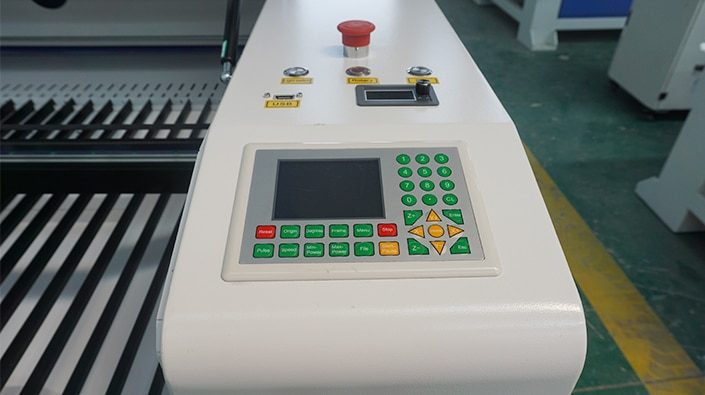
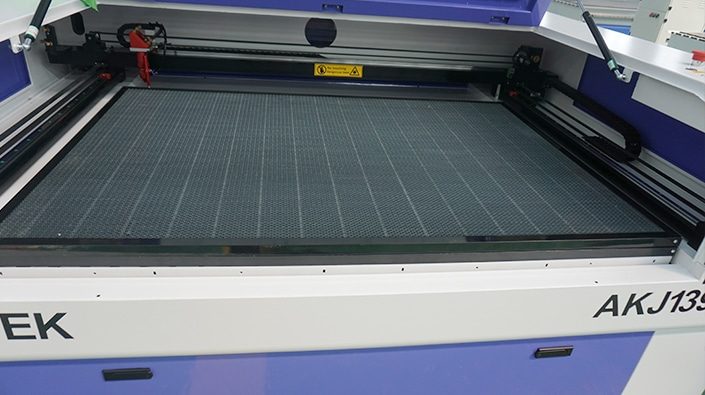
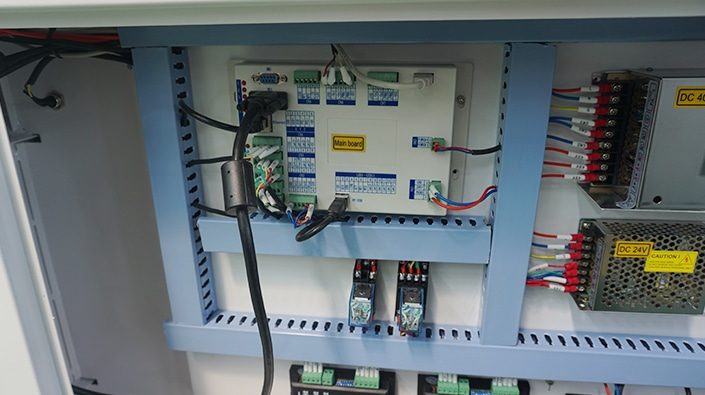
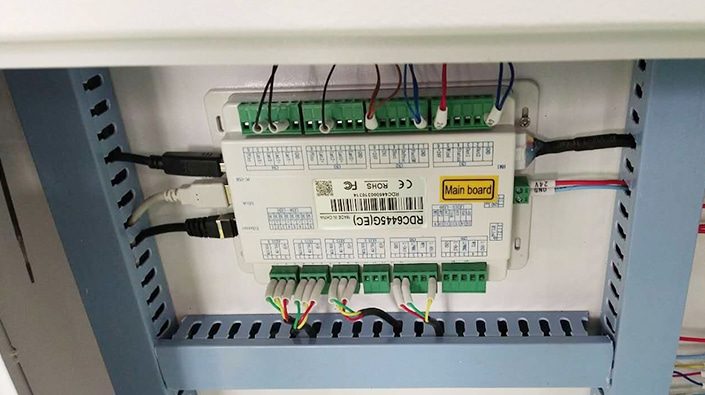
Product Application
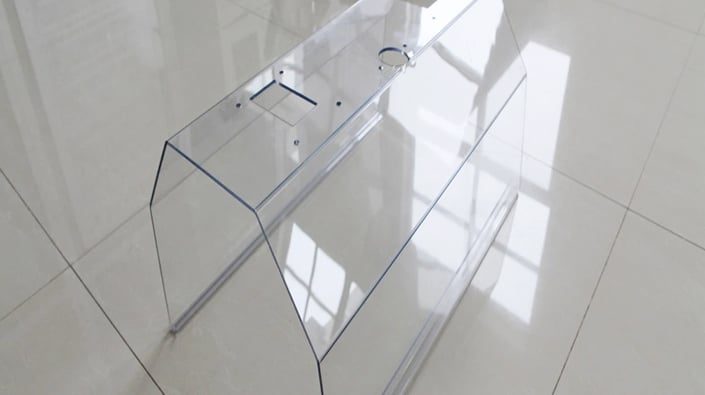
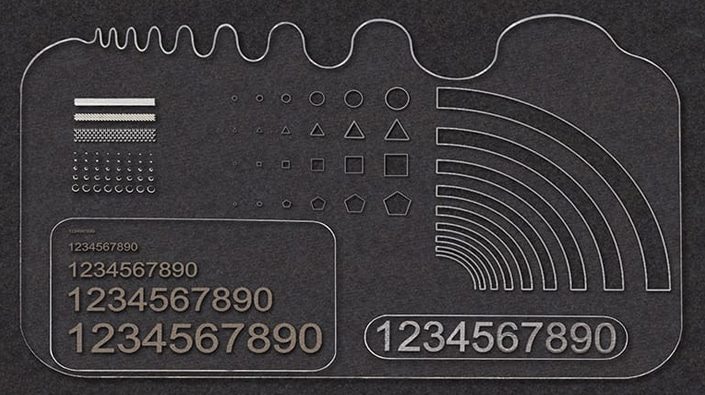
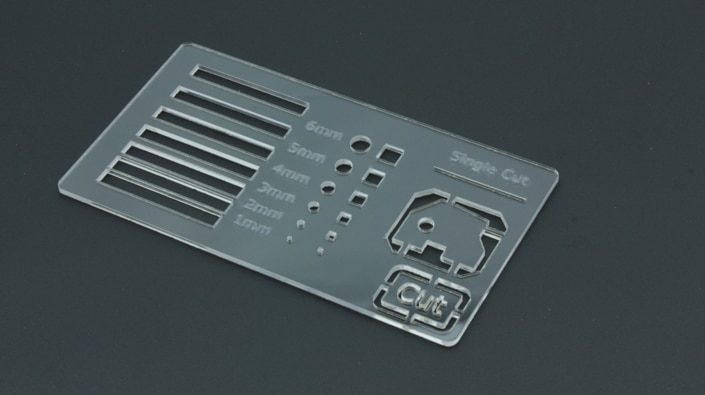
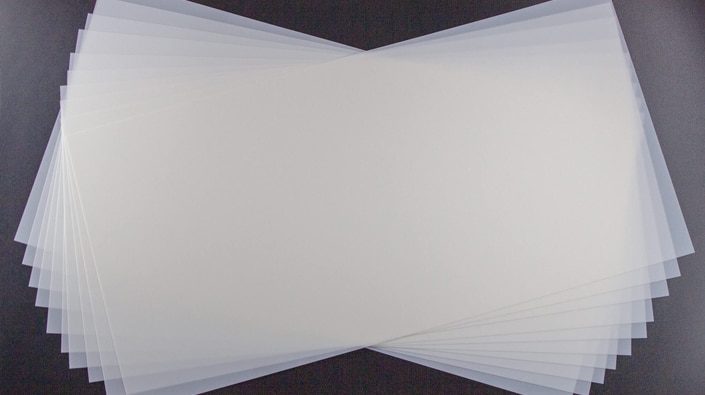
Equipment Selection
High Configuration CO2 Laser Cutting Machine
CO2 Laser Cutting Machine With CCD Camera
CO2 Laser Cutting Machine With Electric Lift Table
Fully Enclosed CO2 Laser Cutting Machine
Double Head CO2 Laser Cutting Machine
CO2 Laser Cutting Machine With Automatic Feeding Device
Large-Size CO2 Laser Cutting Machine
Double Head Large Size CO2 Laser Cutting Machine
Frequently Asked Questions
- Emissions of Hazardous Smoke: When laser cutting PET, potentially harmful smoke and particulate matter may be emitted, especially if the material contains additives, coatings, or colorants. These emissions can include volatile organic compounds (VOCs) and other potentially harmful substances. Adequate ventilation and exhaust systems should be provided to ensure that fumes are properly removed from the work area.
- Material Contamination: Laser-cutting PET may produce residue or debris on the surface of the material. These residues can contaminate laser systems and optics, affect cut quality, and potentially damage equipment. Regular maintenance and cleaning of your laser system helps ensure safe and efficient operation.
- Eye and Skin Protection: Laser-cutting systems emit a powerful, focused beam that may be harmful to eyes and skin. Anyone who operates a laser cutter or is in the area needs to wear appropriate personal protective equipment (PPE), such as laser goggles specifically designed to block the laser wavelengths used.
- Fire Hazard: PET is a flammable material and laser cutting generates heat. Fire may occur if exposed to excessive heat, especially if sparks are generated during the cutting process or if the laser power is too high. You need to ensure that the laser cutter and workspace are well maintained and that appropriate fire safety precautions are taken.
- Correct Equipment and Settings: Proper adjustment of laser power and settings is critical for cutting PET materials. Using the correct laser power settings based on the type and thickness of PET you are cutting will help ensure a clean cut that doesn’t over-burn, scorch, or overheat.
- Training: Operators should be trained in laser safety protocols, emergency procedures, and the safe operation of laser cutters. This includes knowing how to set up the machine, adjust settings, and respond to any problems that may arise during the cutting process.
- Equipment Calibration and Maintenance: Proper calibration of your laser cutting machine helps ensure accurate cuts and avoid overheating or burning of the PET material. Regular maintenance of your laser cutter can also help prevent accidents and ensure safe operation.
- The Material Melts and Ignites: PET has a relatively low melting point compared to other plastics. When laser cutting PET, the laser energy causes localized heating that can cause the material to melt or catch fire. Using appropriate laser power and cutting speed settings can help avoid overheating and ensure clean cuts.
- Hazardous Fumes: Laser cutting of PET releases potentially harmful fumes, including volatile organic compounds (VOCs) and other chemicals. Proper ventilation and scheduling systems help minimize environmental impact and protect operator health.
- Edge Quality: PET is easily scorched at high temperatures, and laser cutting can cause the cutting edges to be scorched and melted. This can become a problem if a clean, smooth cut edge is required, but the desired finish can be achieved with additional post-processing steps.
- Precision Challenges: While laser generators can achieve high-precision cutting, the specific characteristics of PET make achieving precise cuts challenging. The material’s thermal response and potential for melting can cause deviations from the intended cutting path, resulting in inaccurate cuts of the final product.
- Limitations of Complex Geometries: PET’s sensitivity to heat makes it difficult to cut complex geometries without causing warping or deformation. Some designs may be better suited to other cutting methods, such as mechanical cutting or waterjet cutting.
- Maintenance and Safety Issues: Laser cutters require regular maintenance to ensure consistent and safe operation. Optics and components in laser systems degrade over time, resulting in changes in cut quality and potential safety hazards.
- Thermal Stress: Laser cutting brings a lot of heat to the material being cut. This heat can create thermal stresses that can cause the PET sheet or cut parts to warp or deform. This can be a problem when precise dimensional accuracy is required.
- Brittleness and Cracking: PET can become brittle when exposed to high temperatures, and laser cutting involves localized heating. This can cause cracks or cracks along the cut line, reducing the structural integrity of the cut piece.
- Material Waste: Issues related to melting and burning can lead to increased material waste. Adjusting cutting parameters or requiring additional post-processing steps reduces material utilization and increases production costs.
- Emission Control: Laser cutting of PET produces harmful gases and fumes, including volatile organic compounds (VOCs) and particulate matter. Adequate ventilation and exhaust systems should be provided to ensure operator safety and minimize environmental impact.
- Material Composition and Type: Different types and grades of PET have different melting points, chemical compositions, and properties. Understanding the specific characteristics of the PET material you are using can help optimize laser cutting parameters.
- Focus and Beam Alignment: Proper alignment and focusing of the laser beam helps in achieving precise cuts. Misalignment or improper focus can result in uneven cuts, reduced accuracy, and potential material damage.
- Cutting Parameters: Adjust laser power, speed, and focus for optimal cutting results without causing excessive melting, scorching, or discoloration. Finding the right balance between these parameters helps achieve clean, accurate cuts.
- Scorching and Discoloration: PET is prone to scorching and discoloration when exposed to heat generated by laser beams. Trial cuts and parameter adjustments help minimize these effects and maintain edge quality.
- Thermal Stress and Warping: The heat generated during the laser cutting process can cause thermal stress and warping in PET. Technology such as air assist should be considered to help dissipate heat during cutting.
- Optics Maintenance: Laser optics need to be cleaned and maintained on a regular basis to ensure consistent beam quality and cutting accuracy. Dirty optics can lead to poor performance and poor cuts.
- Safety Precautions: Laser cutting involves high-power lasers and can pose risks to the operator. Appropriate safety equipment, including laser safety glasses, should be worn, and operators should be trained in the safe operation of the equipment.
- Masking and Backing: Using masking or backing materials can help prevent scorching or damage to the surface of the material. This can be applied to the top or bottom of the PET sheet to absorb excess heat and protect the material.
- Waste Management: Properly collect and manage waste generated during the laser cutting process. This includes the PET cutting sheets and any residues generated during the cutting process. Dispose of waste in accordance with local regulations.
- Melting Point: Compared with other plastics, PET has a relatively low melting point, usually around 240-260℃ (464-500℉). This makes it susceptible to melting and recasting during laser processing, especially when using higher laser power levels. Proper selection of laser power and cutting speed helps avoid excessive melting and maintain clean cuts.
- Thermal Conductivity: PET has relatively low thermal conductivity, which means it cannot dissipate heat quickly. This characteristic can cause heat to build up during laser processing, which can lead to scorching, discoloration, or even material degradation. Proper control of laser power and cutting speed helps manage thermal effects
- Absorption of Laser Energy: PET’s absorption of laser energy is affected by its color and transparency. Clear or transparent PET may have lower absorption of certain laser wavelengths, which may affect the efficiency and effectiveness of the laser-cutting process.
- Chemical Composition: Different grades of PET have different chemical compositions, including the presence of stabilizers, pigments, and other additives. These additives can affect laser processing performance by changing the material’s absorption properties, thermal conductivity, and behavior when exposed to the laser beam.
- Thermal Sensitivity: When PET is exposed to high temperatures, the material can become brittle and develop stress cracks. Laser cutting parameters should be carefully adjusted to avoid excessive heat generation and minimize the risk of brittle fracture.
- Surface Reflectivity: The reflectivity of the PET material surface affects its efficiency in absorbing laser energy. Reflective surfaces may result in less energy being absorbed, which may affect the quality and speed of laser processing.
- Surface Finish: The surface finish of PET affects the quality of laser processing. Smooth and uniform surfaces tend to produce better results than rough or textured surfaces, which can scatter the laser beam.
- Thickness and Density: Thicker PET materials may require higher laser power levels or slower cutting speeds to achieve a clean cut. The density of a material also affects its heat absorption and response to laser processing.
- Scorching and Discoloration: PET is prone to scorching and discoloration due to thermal decomposition during the laser-cutting process. Adjusting laser parameters can help minimize charring and maintain the visual appearance of the material. Proper ventilation and emissions controls can help manage thermal decomposition byproducts.
- Ventilation and Smoke Emissions: Laser cutting of PET releases volatile organic compounds (VOCs) and other emissions, posing health and environmental risks. The chemical composition of these emissions can vary depending on the specific PET material being processed, and proper ventilation and fume extraction are critical to operator safety.
- Heat Affected Zone (HAZ): The heat-affected zone around a laser cut area is the result of localized heating. The characteristics of PET will affect the size and impact of this heat-affected zone, which in turn affects the overall quality of the cut.

